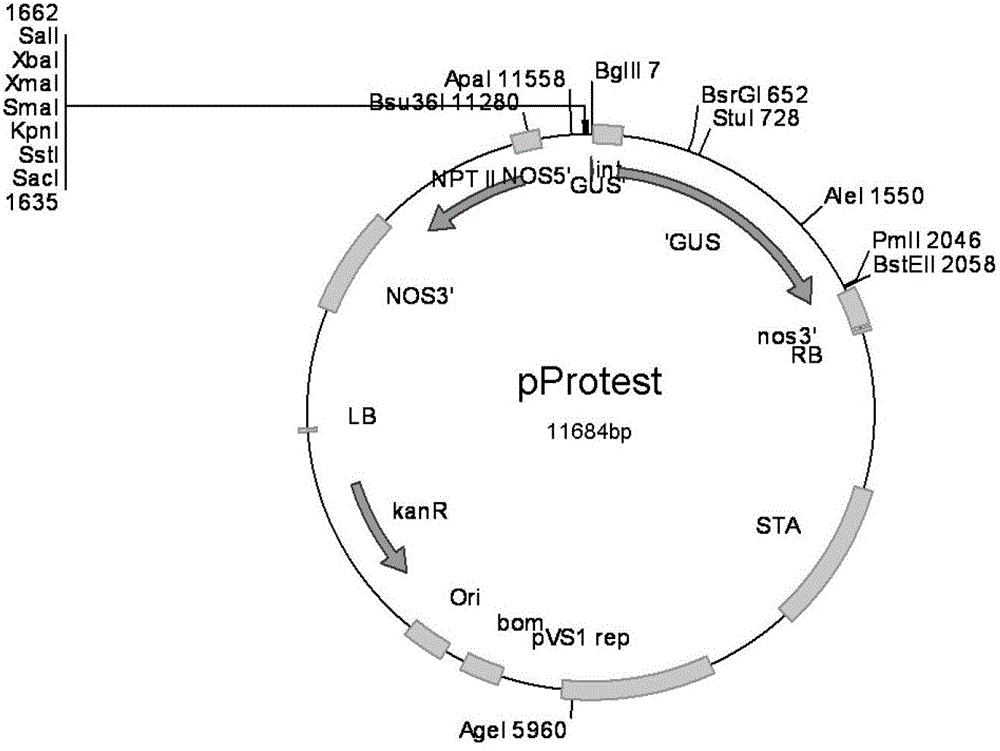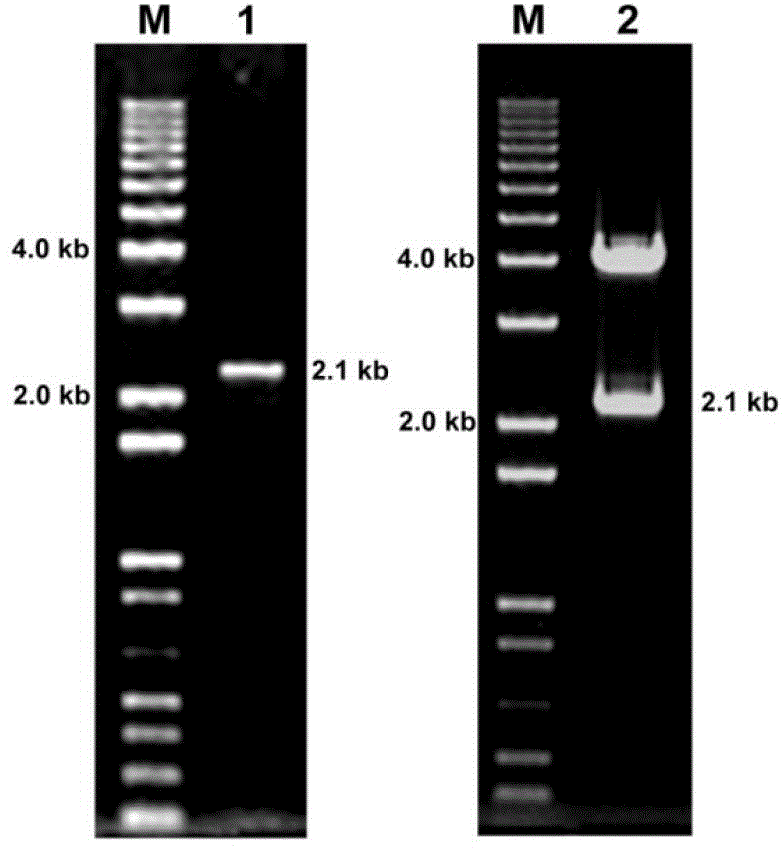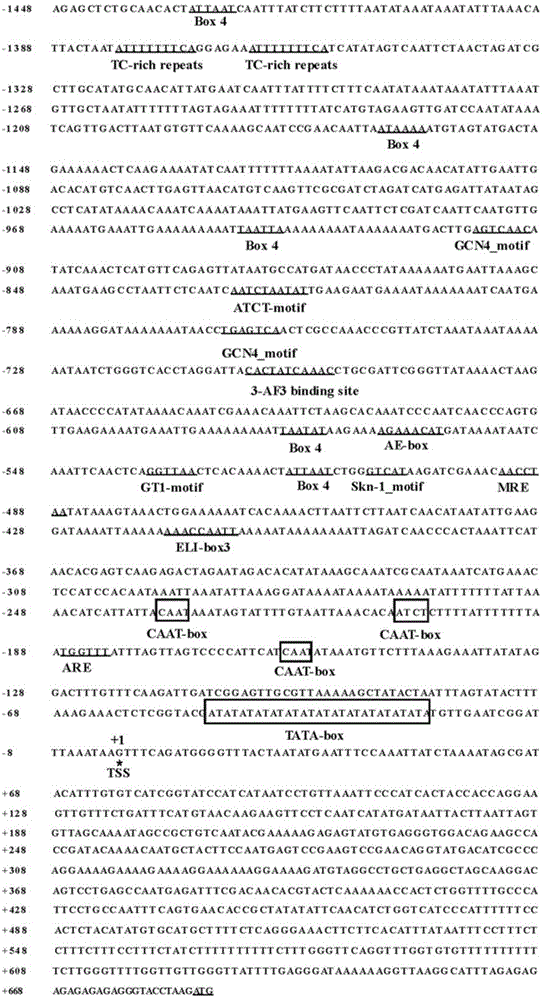Floral organ specific expression promoter separated from Populus trichocarpa Torr.&Gray and application thereof
A flower organ and promoter technology, applied in the field of promoters, can solve the problems of hidden safety concerns of transgenic plants, unfavorable plant growth, excessive consumption of cell materials and energy, etc.
- Summary
- Abstract
- Description
- Claims
- Application Information
AI Technical Summary
Problems solved by technology
Method used
Image
Examples
Embodiment 1
[0050] Example 1 Cloning and sequence analysis of the PtAP1-2 gene promoter of Populus trichocarpa
[0051] According to the operating procedure of the Plant Genomic DNA Extraction Kit of Beijing Tiangen Company, the genomic DNA was extracted from the leaves of Populus trichocarpa clone and identified by 1.2% agarose gel electrophoresis. Primers were designed according to the 5' flanking sequence of Populus trichocarpa AP1-2 gene:
[0052] Upstream primer 5'-A GAGCTC TGCAACACTATTAATCAATTTATC-3',
[0053] Downstream primer 5'-A GGTACC CTCTTCTCTCTCTCTCTAAATG-3';
[0054] SacI and KpnI restriction sites were added to the 5' ends of the upstream and downstream primers, respectively. The 20 μL PCR reaction system includes: 2 μL (100 ng) Populus trichocarpa genomic DNA, 2 μL 10×LA PCR buffer, 1.6 μL (2.5 mmol / L) dNTP, 0.4 μL 10pm / μL upstream primer, 0.4 μL 10pm / μL downstream primer, 0.2 μL LA Taq DNA polymerase (5U / UL), 13.4μL ddH 2 O. The cycle conditions of the PCR reacti...
PUM
 Login to View More
Login to View More Abstract
Description
Claims
Application Information
 Login to View More
Login to View More - R&D
- Intellectual Property
- Life Sciences
- Materials
- Tech Scout
- Unparalleled Data Quality
- Higher Quality Content
- 60% Fewer Hallucinations
Browse by: Latest US Patents, China's latest patents, Technical Efficacy Thesaurus, Application Domain, Technology Topic, Popular Technical Reports.
© 2025 PatSnap. All rights reserved.Legal|Privacy policy|Modern Slavery Act Transparency Statement|Sitemap|About US| Contact US: help@patsnap.com



